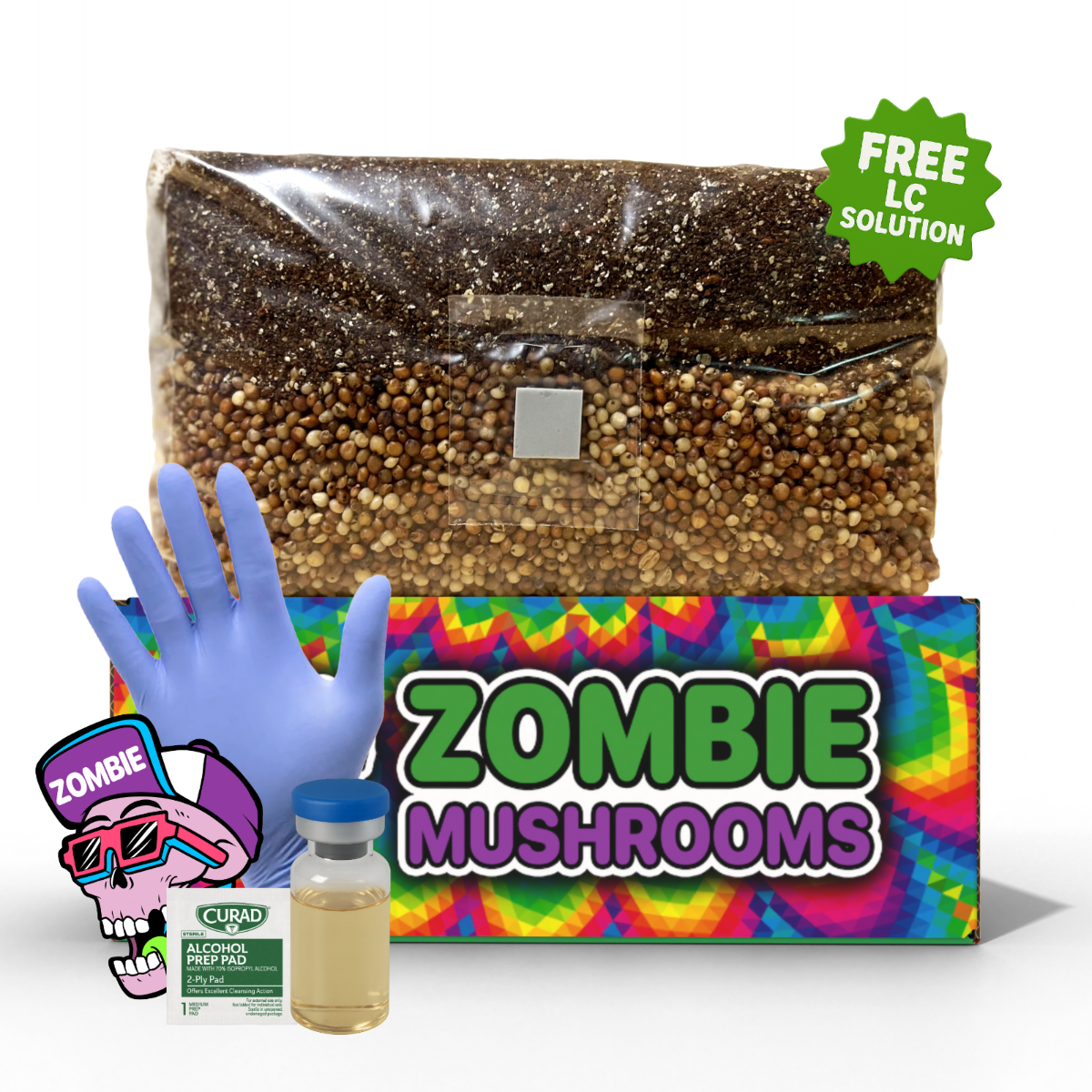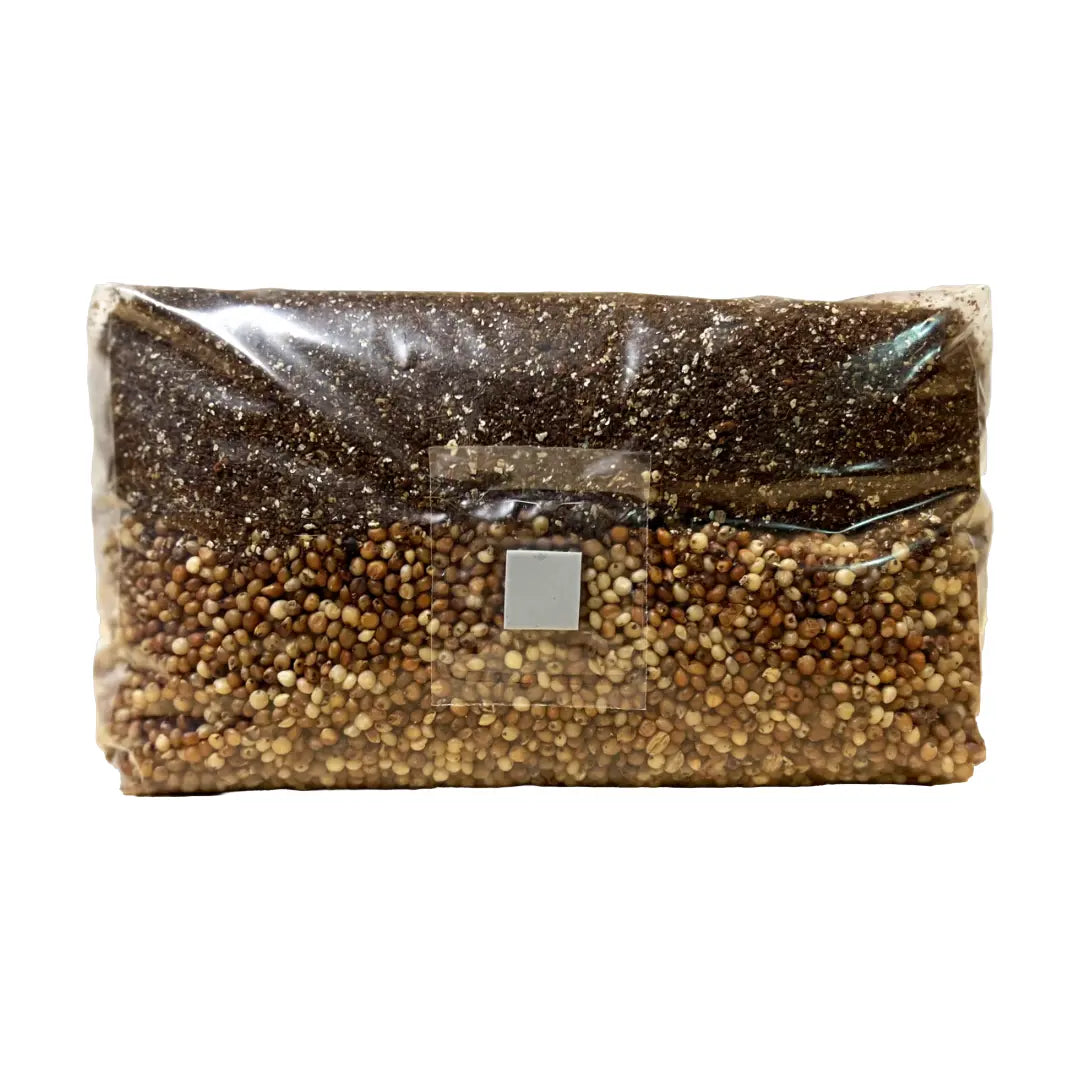⬇️ Prefer to listen instead? ⬇️

- The global edible mushroom market exceeds $42 billion, with wood ear mushrooms gaining popularity.
- Wood ear mushrooms contain polysaccharides linked to immune and cardiovascular health.
- Wood ear fungus is one of the easiest mushrooms to grow on logs or sawdust indoors or outdoors.
- Proper identification is crucial to prevent confusion with lookalikes like brown witch’s butter.
- Wood ear mushrooms are prized for their unique texture and adapt well to various cuisines.

What Is a Wood Ear Mushroom?
Wood ear mushrooms (Auricularia spp.)—also called black fungus, tree ear, or jelly ear—are prized both for their ear-shaped, gelatinous texture and their adaptability to home cultivation. They naturally grow on decaying hardwood in humid, shaded forests, but you can achieve similar results indoors with sawdust blocks or logs. Using mushroom grow bags helps recreate those moist, shady conditions reliably—making it easier to grow fresh wood ear mushrooms at home without complex gear. This guide covers substrate choices, environmental needs, inoculation, harvesting, and troubleshooting so you can cultivate wood ear mushrooms successfully.
Unlike button or portobello mushrooms, wood ear mushrooms don’t offer a strong umami or mushroom taste. Instead, they have a crunchy texture that feels good to eat. It makes dishes more interesting. They soak up strong sauces well. This is why they are good in dishes from China, Thailand, Korea, and Vietnam.
People in traditional Chinese medicine have used wood ear mushrooms for hundreds of years. They believed the mushrooms helped health. They have lots of fiber. They also have polysaccharides. Some people think these help the immune system and blood flow. So, these mushrooms taste good and might offer health benefits.

Identification Guide: Spotting Wood Ear in the Wild
If you go looking for wood ear fungus in the woods, you must know how to spot it correctly. This helps you find edible mushrooms and avoid ones that are bad or even toxic. Wood ear mushrooms are fairly easy to find. This is especially true when it is wet. They like to grow on damp logs, dead branches, or fallen trees. Look for them in shaded parts of the forest.
Key identification features include:
- Texture: Wet ones feel rubbery, soft, and like jelly. You can't break them easily by pressing them. And they go back to their shape after you squeeze them.
- Size & Shape: They usually look like lobes or ears. They are about 1 to 3 inches wide. They can grow alone or in small groups. But their ear shape is easy to see.
- Color: The color changes. Young ones can be light beige. Older ones are deep reddish-brown or dark brown.
- Spore Print: If you make a spore print, it will be white. This helps you know it is a wood ear and not something similar.
- Where it Grows: It only grows on wood. It likes hardwood trees like elder, maple, or elm.
- When to Find It: You often see them after rain in spring and fall. In places with mild weather, they might even grow through the winter.
Always bring a knife and something clean like white paper or foil. You can use it to make a spore print right there if you aren't sure.

Differentiating Wood Ear Fungus from Lookalikes
Finding wood ear mushrooms is pretty simple. But it is important not to mistake them for other jelly fungi. Some of these others might not be safe to eat. The one people mistake it for most is brown witch’s butter (Phaeotremella foliacea). This one often grows in the same places.
Here’s a detailed comparison of traits:
| Feature | Wood Ear Mushroom (Auricularia) | Brown Witch’s Butter (Phaeotremella) |
|---|---|---|
| Texture | Thick, rubbery, slightly springy | Soft, gelatinous, more fragile |
| Size | 2–4 inches, ear-like folds | Smaller, irregular lobes |
| Coloration | Uniform light to dark brown | Often translucent brown |
| Growth Style | Individual lobes or small clusters | Amorphous masses or blobs |
| Substrate Preference | Decaying hardwood | Logs, bark, often conifer woods |
| Spore Print | White | Often lacking a visible print |
When foraging: If in doubt, leave it out. Use a good mushroom guide book. Or think about taking a beginner class to learn by doing.
Is It Safe and Easy to Grow Wood Ear Mushrooms at Home?
Yes—wood ear mushrooms are some of the easiest fungi to grow at home. This is especially true for people just starting. They are easy to work with. They don't need much room. And they grow well in warm, wet places. If you have a backyard with shade or a wet basement, there is a way to grow them that will work for your space.
One good thing about growing wood ear mushrooms is that they grow on materials that are good for the environment. You can grow them on logs cut fresh if you like being outdoors. Or you can use sawdust blocks inside if you want small, easy systems. Once you start them growing, you don't need to do much else. Just keep the air wet.
Also, wood ear fungus doesn't get bugs or bad molds as easily as other fancy mushrooms. This makes it a good way to start growing mushrooms.
Benefits of Growing Your Own:
- Fresh mushrooms on demand
- Fully organic and chemical-free
- Save money over store-bought varieties
- Learn about sustainable agriculture and fungal life cycles
- Dried mushrooms from your harvest can last all year
If you like cooking, gardening, or helping the environment, wood ear mushrooms are a good thing to grow at home.

Choosing & Preparing Substrates for Wood Ear Mushrooms
You don't need to spend a lot to start growing wood ear mushrooms. But you will need a few key things to do it right.
Here’s a breakdown of gear you need:
Growing Medium:
-
Hardwood Logs: Select fresh-cut logs from oak, beech, elder, or similar broadleaf hardwoods. Logs should be 4-8 inches in diameter and cut during late fall to early spring. Let them rest for 1-3 weeks to reduce natural antifungal compounds. Soak in clean, non-chlorinated water for 24 hours before inoculation.
-
Sawdust Blocks / Grow Bags: Use hardwood sawdust supplemented with a small amount of bran or other nutrient source. Pasteurize or sterilize the mix; pack it into mushroom grow bags for indoor grows. Bags with filter patches help with clean air exchange and reduce risk of contamination.
-
Moisture & Sterility: Target substrate moisture around 60-65% for sawdust blocks. Logs should be moist but not waterlogged. Sterilize sawdust (pressure cooker or steam) and clean all tools to ensure successful colonization.
Spawn:
- Buy good wood ear mushroom spawn or liquid culture. Get it from suppliers you trust, like Zombie Mushrooms. Pick sawdust or plug spawn based on how you plan to grow them.
Tools:
- Drill with appropriate bit (5/16 inch for plug spawn)
- Wax (cheese wax or beeswax) for sealing log holes
- Hammer or inoculation tool
- Gloves and sterile workspace gear
Environmental Tools:
- Humidity tent, small greenhouse, or plastic tub for indoor grows
- Spray bottle or misting system to maintain moisture
- Thermometer and humidity gauge to monitor conditions
Often, grow kits come with spawn, growing material, and step-by-step guides. This makes it easier to start, especially for people growing for the first time.

Step-by-Step: How to Cultivate Wood Ear Mushrooms
Step 1: Get Your Growing Material Ready
For logs, cut hardwood branches (4–8 inches across). Let them sit for up to three weeks. Soak the logs in clean water without chlorine for 24 hours before you put the spawn in.
For sawdust, mix sawdust (pasteurized) with wheat bran (5 parts sawdust to 1 part bran). Add water so it is 60–65% wet. Kill germs using pressure or steam before you add the spawn.
Step 2: Put the Spawn in the Material
- Logs: Drill holes 1 inch deep. Make them 4 to 6 inches apart in lines along the log. Put the spawn in the holes. Seal them with wax. This keeps water in and stops bad stuff from getting in.
- Sawdust Bags: Mix the spawn well into the pasteurized sawdust. Pack it tight into grow bags. Use bags with filter patches that let air through. Or cut small slits for air.
Step 3: Let the Mushroom Grow Through
The mushroom's root-like threads (mycelium) will start to spread in the wood or sawdust.
While this is happening:
- Logs: Stack them flat outside in a shady, wet spot. It takes 6 to 12 months for the mushroom to grow through the log.
- Sawdust Bags: Put them in a dark, wet spot (60–75°F). The mushroom grows through faster here. It usually takes 4 to 8 weeks.
Spray water gently once or twice every day. Make sure the material stays wet, but not too wet.
Step 4: Make the Mushrooms Grow
When the mushroom has fully grown through (the sawdust or log will look white and packed with the mushroom threads), give it fresh air. Also, make the temperature a bit cooler. This will make the mushrooms start to grow.
Make a place for them to grow with 85 to 95% wetness in the air and soft light. In 7 to 14 days, groups of mushrooms will start to show up. They will look like small ear shapes.
Step 5: Pick the Mushrooms When They are Best
When the mushrooms are big enough and feel firm but you can still bend them, cut them clean at the bottom. Use a sharp knife that is clean. Avoid pulling or twisting them. This helps you get more mushrooms later.
You can pick them several times during a growing season. This is especially true for logs. They can keep growing for up to five years.

Cultivation Challenges & How to Overcome Them
Even though wood ear mushrooms are easy to care for, you might still have problems while growing them.
Here’s a troubleshooting guide:
| Challenge | Symptom | Solution |
|---|---|---|
| Slow Growth | Sparse or no mycelium development | Check substrate moisture, increase warmth |
| Dry Conditions | Mushrooms shrivel, don’t fruit | Increase misting, use humidity tents |
| Contamination | Green or black mold appears | Improve sterilization, isolate quickly |
| Stunted Fruiting | Short flushes, small mushrooms | Add fresh air exchange, adjust temperatures |
| Light Exposure | Sunlight burns or dries fungi | Move to indirect light or shaded location |
Most people starting out do well if they check the growing conditions often. And they should fix problems as soon as they see them.

Harvesting Techniques and Best Practices
Picking wood ear mushrooms needs good timing and method. For the best results:
- Pick them when they are about 2–4 inches wide and fully open.
- Use a clean, sharp knife to pick them. Be careful not to hurt the log or sawdust.
- Don't pick them if it's dry. Spray them with water to make them wet again. Wait until they look full and bouncy before picking.
You can pick mushrooms many times from one start. This works best if you take good care of them. Also, be careful with the mushroom's root part at the bottom.

Proper Storage and Preservation Techniques
Wood ear mushrooms store well for a long time. This is because they hold water and dry easily.
| Storage Method | How to Store | Duration |
|---|---|---|
| Fresh (Chilled) | Paper bag inside refrigerator | Up to 1 week |
| Dried | Use food dehydrator (110–120°F) until brittle; store in airtight jar | 6–12 months |
To use dried mushrooms, soak in hot water for 20–30 minutes. They will get their shape and feel back. Then they are ready to cook. Don't freeze them. Ice crystals will mess up how they feel.

Culinary Applications: Cooking and Flavor Pairings
Cooking with wood ear mushrooms is a good cooking experience. Other mushrooms might be the main flavor in a dish. But wood ears soak up the taste of the foods around them. They are like cooking shapes that change to fit in.
Popular culinary pairings:
- Garlic & Ginger: Classic duo for stir-fries and soups
- Soy Sauce & Vinegar: Brings out their naturally subtle earthiness
- Sesame Oil & Chili Oil: Adds richness and contrast
You must always cook them. Raw wood ear mushrooms might have germs or make your stomach hurt.

Recipe Feature: Wood Ear Mushroom and Asparagus Salad
This salad is light, crisp, and has a savory taste. It is great for a summer side dish.
Ingredients:
- 1 cup rehydrated wood ear mushrooms
- 1 bunch asparagus, blanched and sliced diagonally
- 2 tbsp sesame oil
- 1 tbsp rice vinegar
- 1 tsp white miso paste
- Zest of 1 orange
- Pinch of chili flakes
- Combine miso, sesame oil, vinegar, and orange zest into a smooth dressing.
- Toss sliced rehydrated mushrooms and asparagus in the dressing.
- Chill for 15 minutes; garnish with chili flakes before serving.
This dish doesn't have many calories and has lots of fiber. It shows how well wood ears work in fresh food.

Other Creative Recipes & Flavor Guides
Try new ways to cook them with these ideas:
- Korean Japchae: Stir-fried glass noodles with vegetables and chewy wood ear mushrooms.
- Thai Spring Rolls: Add crunch to fresh veggie rolls with slivered mushrooms and hoisin sauce.
- Pepper Tofu Stir Fry: Wood ear mushrooms blend well with spicy tofu and bell peppers.
These mushrooms can be used in many ways. They fit easily into diets like vegan, paleo, or low-fat.

Frequently Asked Questions
-
How long does it take for wood ear mushrooms to fruit?
-
On sawdust or in grow bags: usually 4-8 weeks from inoculation to harvest under ideal conditions.
-
On hardwood logs: fruiting can take 6-12 months, depending on log size and environmental consistency. mushroology.com+1
-
-
Can I grow wood ear mushrooms indoors using grow bags?
Yes. Grow bags are excellent for indoor cultivation because they allow you to control temperature, humidity, and light more easily. Bags with filter patches help reduce contamination risk. -
What substrate type gives the best yields? Logs or sawdust?
Sawdust blocks grow faster and are more space-efficient indoors; logs often produce multiple flushes over time and are more durable outdoors. The trade-off is time and labor. -
What are common mistakes when growing wood ear mushrooms?
-
How do I harvest and store wood ear mushrooms?
Harvest when caps are firm, ear-shaped, and pliable (2-4 inches wide). Use a clean cut on the base. For storage: fresh mushrooms last ~1 week refrigerated; dried wood ears (dehydrated to brittle) can last many months in airtight containers.
Should You Grow Wood Ear Mushrooms at Home?
If you are interested in growing mushrooms, or just want to make your meals better with texture and healthy food, growing wood ear mushrooms is a good chance. They work well in different places, don't need much care, and give you mushrooms for a long time.
They are easy to handle, so people just starting can feel sure about growing them and grow more easily. You can dry them to use all year, or eat them fresh when they are ready. The wood ear fungus is a good thing to add to your food garden or kitchen.
Citations
- Zhang, H., Yan, Y., & Zhang, L. (2021). Edible mushroom market trends: A global outlook. ResearchGate. https://www.researchgate.net/figure/Global-annual-market-revenue-USD-billion-of-edible-mushrooms-estimated-and-projected-by_fig2_351719112



